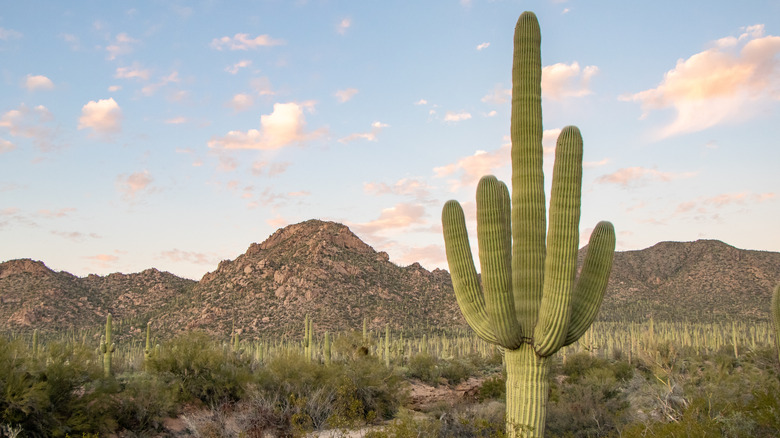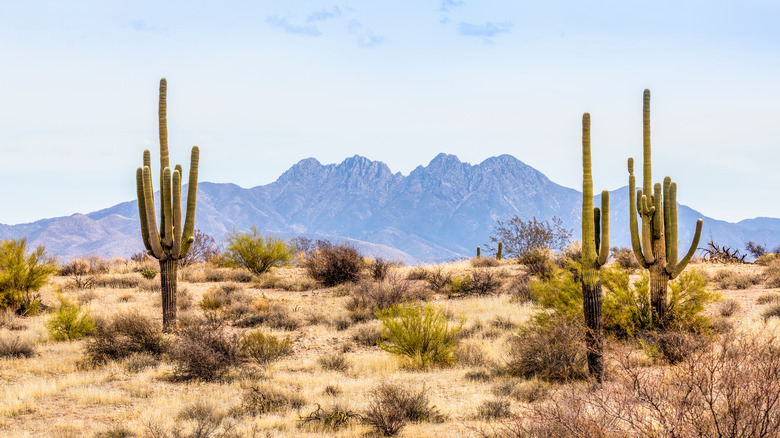Where Do Saguaro Cacti Grow?
The saguaro cactus (Carnegiea gigantea) is a plant typically found in the western portions of the United States. According to the National Park Service (NPS), the saguaro cactus is one of the wonders tourists enjoy seeing when traveling to these arid regions; it is also considered an iconic plant of the West. Carnegiea gigantea is classified as a defining part of the Sonoran Desert since it has a broad cultural reverence. In line with this profound approval, the NPS noted how photos of this plant have evolved into a symbolic shorthand for western America.
According to the NPS, the local Tohono O'Odham population reveres the plant — to these indigenous people, the cactus is more than a staple of the desert. Per their history, the Tohono O'Odham people are descendants of settlers who chose to live near the Salt, Gila, and Santa Cruz Rivers, via the Tohono O'odham Nation. To this day, the Tohono O'odham consider Carnegiea gigantea to be persons and members of their tribe.
The saguaro cactus is native to the Sonoran Desert
The National Park Service (NPS) notes that the saguaro cactus grows primarily in the Sonoran Desert. They also say that the plant is labeled a desert indicator species. These cacti can generally thrive in elevations ranging from sea level to 4,000 feet. However, the agency reports that when this cactus is in more northern and higher-elevation environments, it will only grow on south-facing terrain, which gets more sun.
The experts over at Britannica explain that the Sonoran Desert spans 120,000 square miles and is composed of southwestern Arizona and southeastern California. It also covers a substantial portion of a Mexican region known as Baja California Sur. Since the Sonoran Desert is tropical, it rarely sees frost but receives 3 to 15 inches of rain per year. Rainfall in the Sonoran Desert typically occurs between July and September. It can be heavy when preceded by thunderstorms, but in December and January, it is light.

